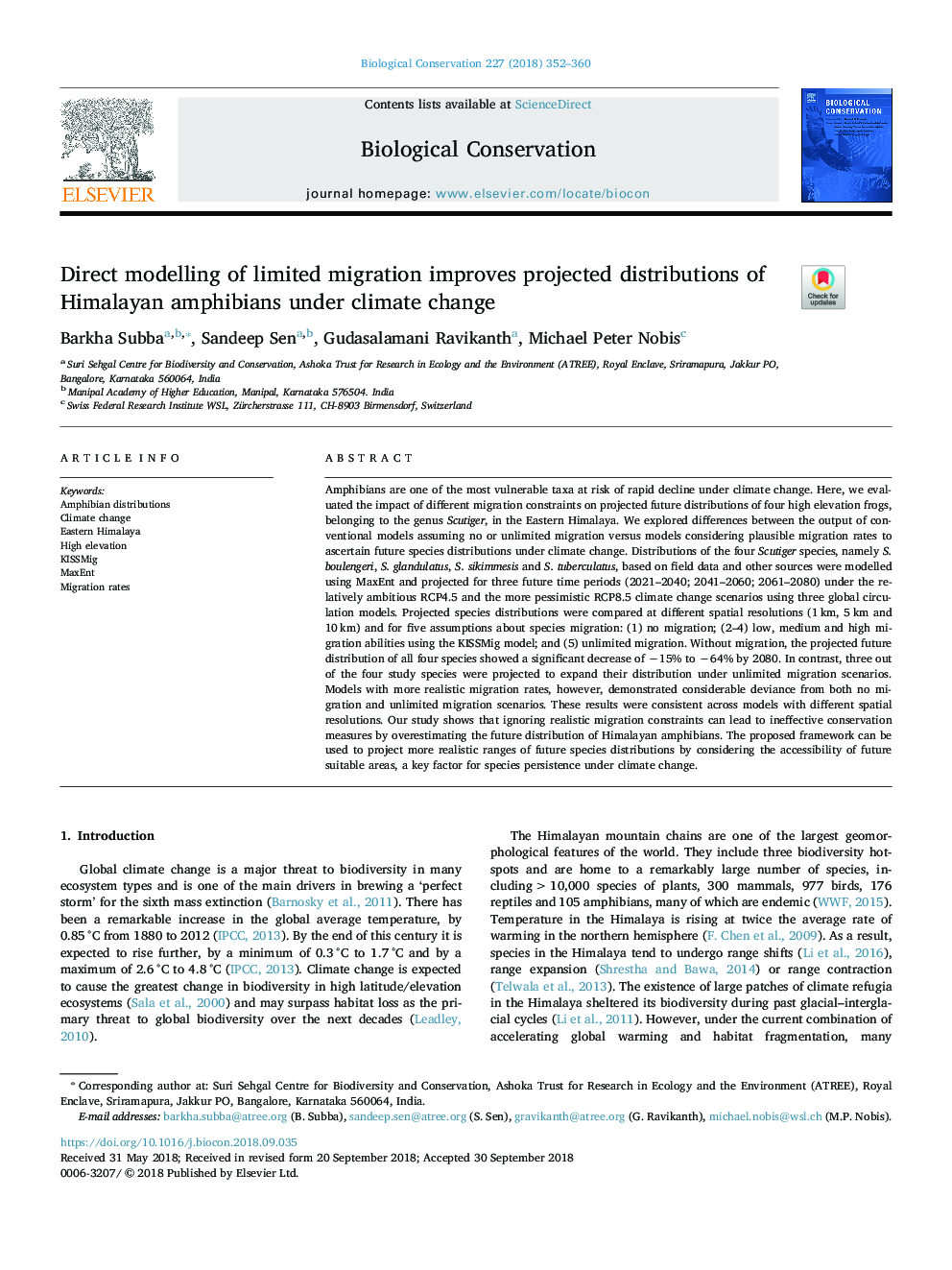| Article ID | Journal | Published Year | Pages | File Type |
|---|---|---|---|---|
| 11030492 | Biological Conservation | 2018 | 9 Pages |
Abstract
Amphibians are one of the most vulnerable taxa at risk of rapid decline under climate change. Here, we evaluated the impact of different migration constraints on projected future distributions of four high elevation frogs, belonging to the genus Scutiger, in the Eastern Himalaya. We explored differences between the output of conventional models assuming no or unlimited migration versus models considering plausible migration rates to ascertain future species distributions under climate change. Distributions of the four Scutiger species, namely S. boulengeri, S. glandulatus, S. sikimmesis and S. tuberculatus, based on field data and other sources were modelled using MaxEnt and projected for three future time periods (2021-2040; 2041-2060; 2061-2080) under the relatively ambitious RCP4.5 and the more pessimistic RCP8.5 climate change scenarios using three global circulation models. Projected species distributions were compared at different spatial resolutions (1â¯km, 5â¯km and 10â¯km) and for five assumptions about species migration: (1) no migration; (2-4) low, medium and high migration abilities using the KISSMig model; and (5) unlimited migration. Without migration, the projected future distribution of all four species showed a significant decrease of â15% to â64% by 2080. In contrast, three out of the four study species were projected to expand their distribution under unlimited migration scenarios. Models with more realistic migration rates, however, demonstrated considerable deviance from both no migration and unlimited migration scenarios. These results were consistent across models with different spatial resolutions. Our study shows that ignoring realistic migration constraints can lead to ineffective conservation measures by overestimating the future distribution of Himalayan amphibians. The proposed framework can be used to project more realistic ranges of future species distributions by considering the accessibility of future suitable areas, a key factor for species persistence under climate change.
Related Topics
Life Sciences
Agricultural and Biological Sciences
Ecology, Evolution, Behavior and Systematics
Authors
Barkha Subba, Sandeep Sen, Gudasalamani Ravikanth, Michael Peter Nobis,
